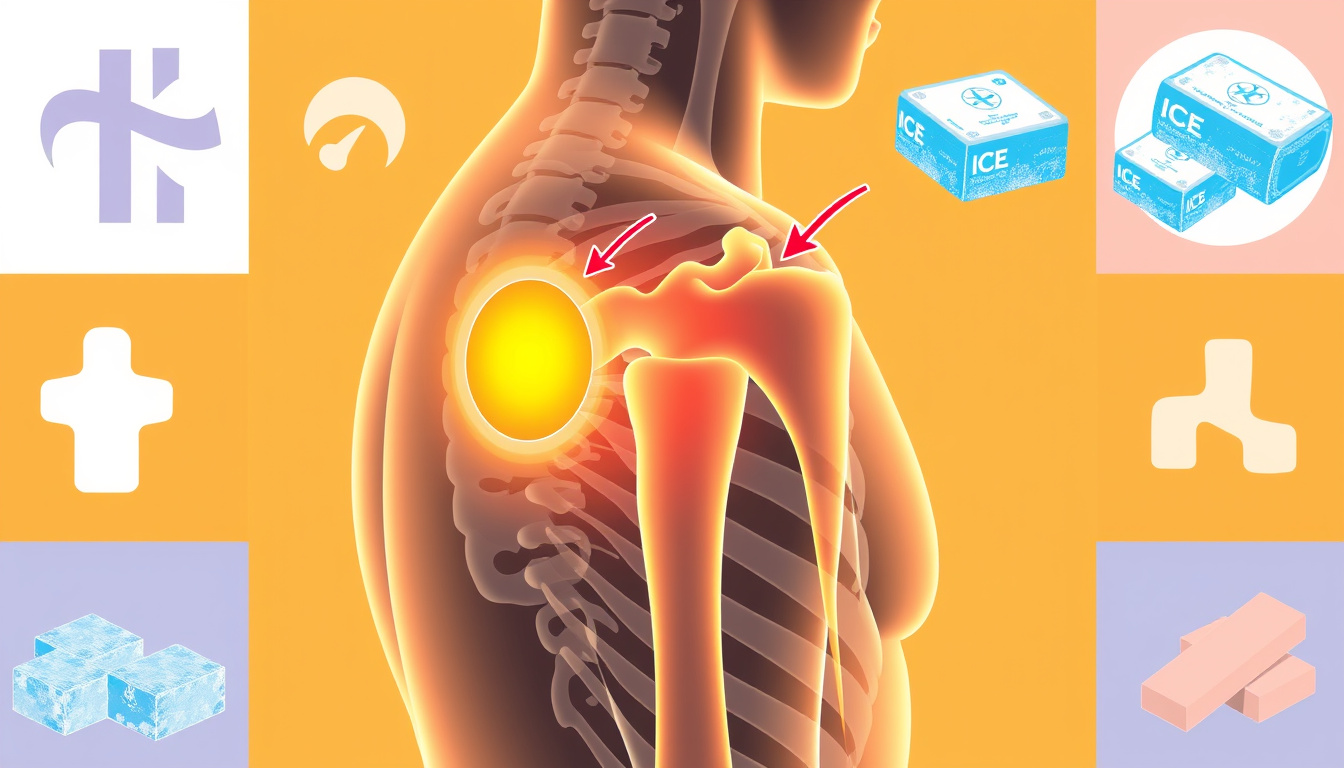
04 Apr Understanding Impingement Syndrome: Symptoms, Causes, and Effective Treatments
Impingement syndrome is a prevalent condition that can cause significant pain and discomfort in various joints, particularly the shoulder. Understanding this syndrome is essential for anyone experiencing persistent joint pain or seeking to enhance their overall joint health. In this comprehensive guide, we will delve into what impingement syndrome is, its common symptoms, underlying causes, diagnostic processes, effective treatments, and practical prevention strategies. By the end of this article, you’ll have a well-rounded knowledge of impingement syndrome, empowering you to make informed decisions regarding your health.

Key Takeaways
- Impingement syndrome occurs when shoulder tendons are compressed during arm movements.
- Common symptoms include shoulder pain, limited range of motion, and discomfort at night.
- Causes range from repetitive overhead activities to structural anomalies in the shoulder anatomy.
- Diagnosis involves physical examinations, imaging tests, and assessments of mobility and pain.
- Effective treatments include physical therapy, corticosteroid injections, and in some cases, surgical interventions.
What is Impingement Syndrome?
Impingement syndrome is a common condition affecting the shoulder, characterized by pain and limited range of motion due to irritation or inflammation of the rotator cuff tendons. Typically, it occurs when these tendons become compressed during shoulder movements, particularly when lifting the arm above the head. This condition is often associated with activities that require repetitive overhead motions, making athletes, particularly in sports such as swimming, tennis, and baseball, more susceptible. Symptoms of impingement syndrome may include a dull ache in the shoulder, weakness in the arm, and difficulty with activities like reaching or lifting. Early diagnosis and treatment, which can include physical therapy, anti-inflammatory medications, or in some severe cases, surgery, are essential for preventing long-term damage and restoring shoulder function.
Common Symptoms of Impingement Syndrome
Impingement syndrome is a condition that arises when the tendons of the rotator cuff become irritated and inflamed as they pass through the shoulder joint. Recognizing the common symptoms of impingement syndrome is crucial for early diagnosis and treatment. Individuals often report persistent shoulder pain, especially when lifting the arm overhead or reaching behind the back. This pain may radiate down the arm and can be accompanied by a sense of weakness in the shoulder. Another prevalent symptom is a clicking or popping sensation during certain movements, indicating that the tendons may be catching on bony structures within the shoulder. Additionally, stiffness and decreased range of motion are common, making daily activities challenging. If you or someone you know is experiencing these symptoms, it’s important to consult a healthcare professional for an accurate evaluation and appropriate management strategies to prevent the condition from worsening.
‘Health is not just about what you’re eating. It’s also about what you’re thinking and saying.’ – Unknown

Causes of Impingement Syndrome
Impingement syndrome is a common condition that arises when the tendons of the rotator cuff become irritated and inflamed as they pass through the shoulder joint, leading to pain and restricted movement. One of the primary causes of impingement syndrome is repetitive overhead activity, which is often seen in athletes such as swimmers, baseball pitchers, and tennis players. Additionally, age-related changes, such as bone spurs or calcification within the shoulder, can contribute to the narrowing of the subacromial space, thereby increasing the risk of impingement. Poor posture, particularly forward slumping of the shoulders, can further exacerbate the problem by altering shoulder mechanics and placing additional strain on the tendons. Understanding these causes is crucial for identifying and implementing effective prevention and treatment strategies for impingement syndrome.
Diagnosis and Assessment of Impingement Syndrome
Diagnosis and assessment of impingement syndrome is a critical process that helps healthcare professionals develop effective treatment strategies. Impingement syndrome, characterized by pain and inflammation in the shoulder due to the compression of tendons and bursae, requires a comprehensive evaluation for accurate diagnosis. The initial step typically involves a thorough clinical history review, where patients describe their symptoms, including pain intensity and its relation to overhead activities. Following this, a physical examination is conducted to assess shoulder function, range of motion, and strength. Special tests, such as the Neer and Hawkins-Kennedy tests, are often employed to confirm the presence of impingement syndrome. Imaging studies, like X-rays or MRI, may also be utilized to rule out other potential shoulder pathologies and to visualize the degree of impingement. By combining these diagnostic methods, healthcare providers can create personalized treatment plans aimed at alleviating symptoms and improving shoulder function for those affected by impingement syndrome.

Effective Treatments for Impingement Syndrome
Impingement syndrome is a common condition affecting the shoulder, characterized by pain and limited range of motion due to the compression of shoulder tendons and bursa in the subacromial space. Effective treatments for impingement syndrome typically begin with conservative management strategies. These may include rest, ice application, and nonsteroidal anti-inflammatory drugs (NSAIDs) to alleviate pain and inflammation. Physical therapy plays a crucial role in recovery, focusing on exercises that improve flexibility, strengthen shoulder muscles, and promote proper biomechanics. If conservative treatments do not yield sufficient results, your healthcare provider may recommend corticosteroid injections to reduce inflammation. In severe or persistent cases, surgical options such as arthroscopic decompression may be considered to relieve pressure on the affected tendons. It’s essential to consult with a healthcare professional to determine the most appropriate treatment plan based on the severity of the impingement syndrome and individual health considerations.
Prevention Strategies for Impingement Syndrome
Impingement syndrome is a common shoulder injury that occurs when the rotator cuff tendons become compressed during shoulder movements, leading to pain and reduced mobility. To prevent impingement syndrome, it’s essential to adopt several effective strategies. Firstly, incorporating regular stretching and strengthening exercises into your routine can help maintain shoulder flexibility and improve muscle balance. Focus on exercises that target the rotator cuff and scapular stabilizers, as stronger muscles in these areas can provide better support to the shoulder joint. Additionally, practice proper techniques during physical activities, especially those that involve overhead movements, to reduce the risk of unnecessary strain. Furthermore, ensure your workspace is ergonomically optimized to promote good posture, which can prevent shoulder impingement. If you experience pain or discomfort, it’s advisable to consult a healthcare professional for personalized guidance. By implementing these prevention strategies, you can significantly reduce your risk of developing impingement syndrome and maintain optimal shoulder health.

Sorry, the comment form is closed at this time.